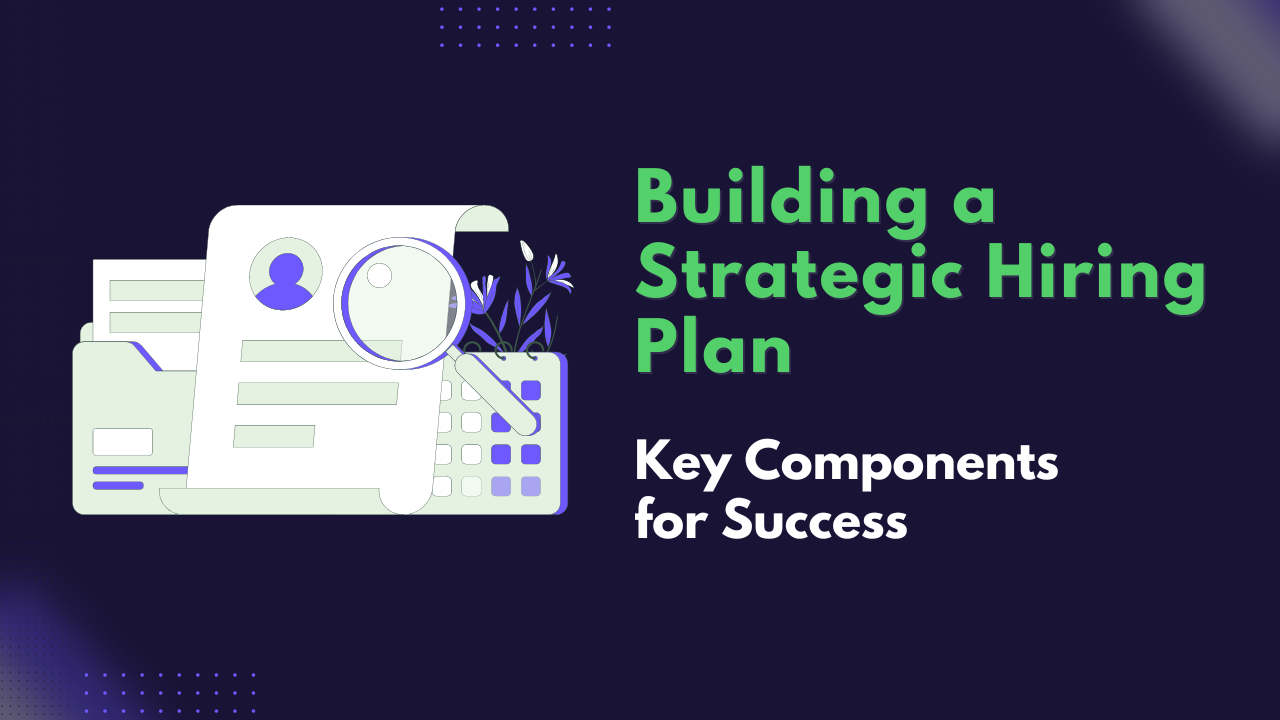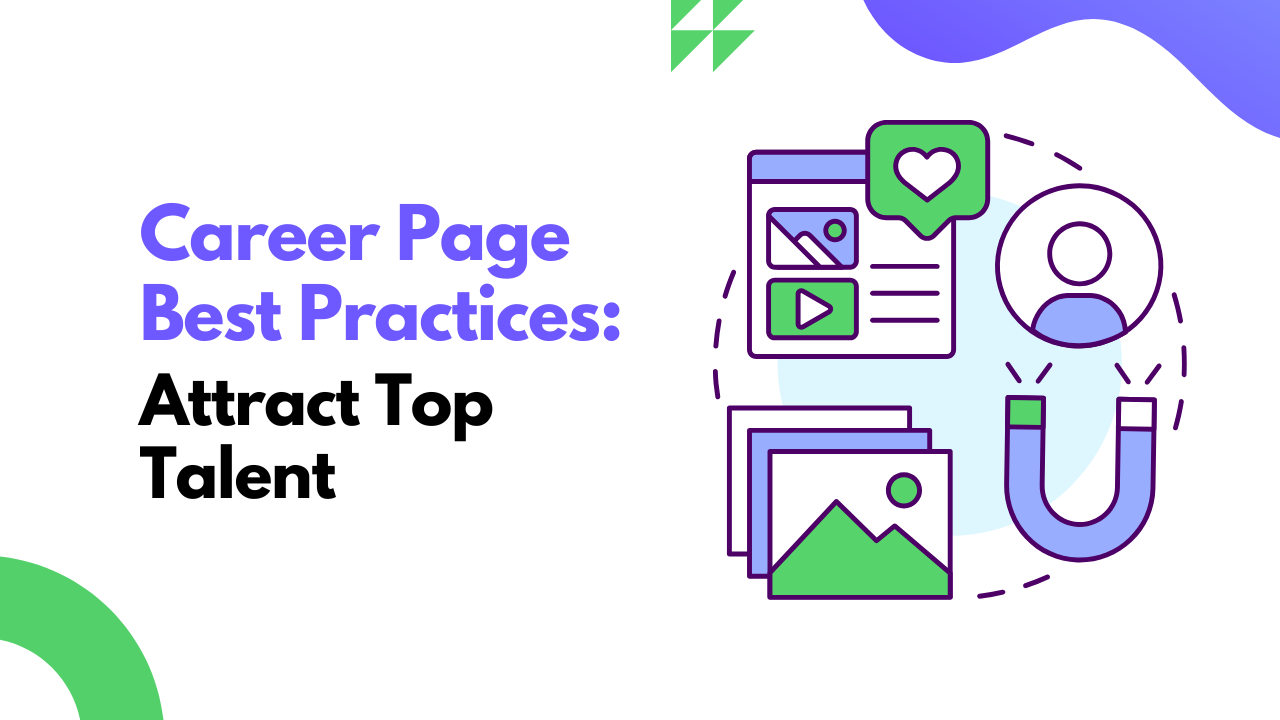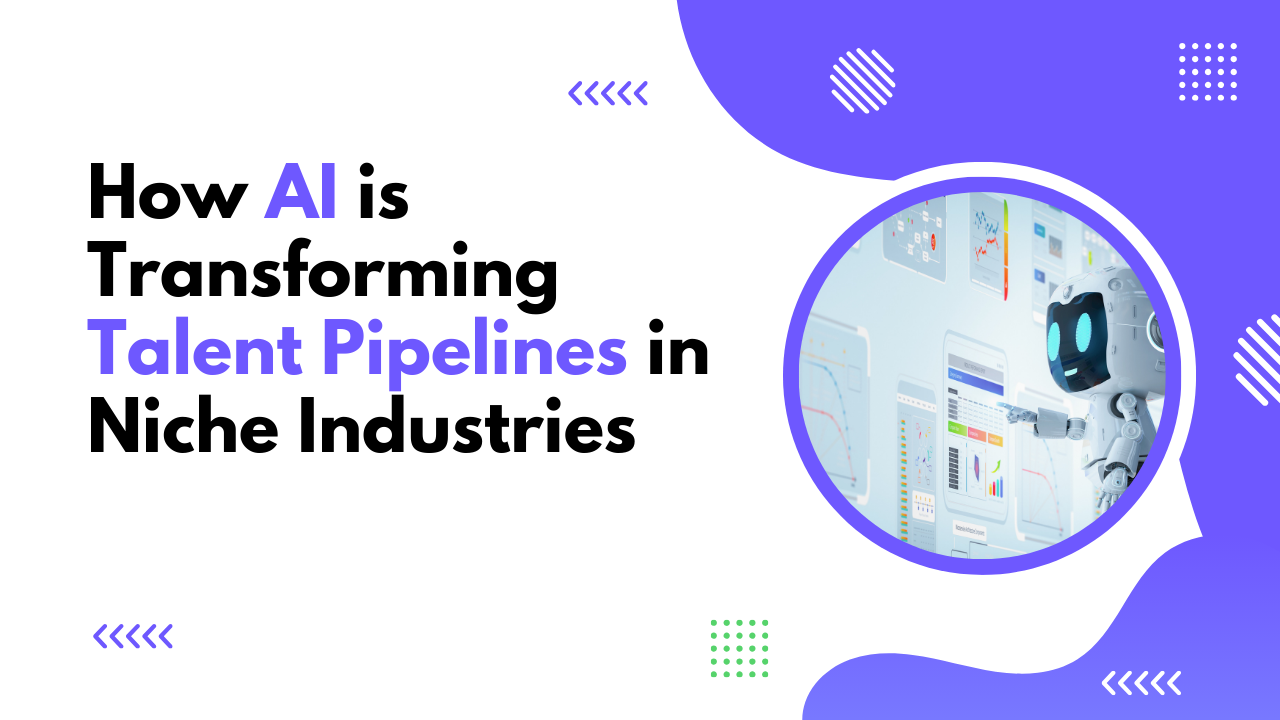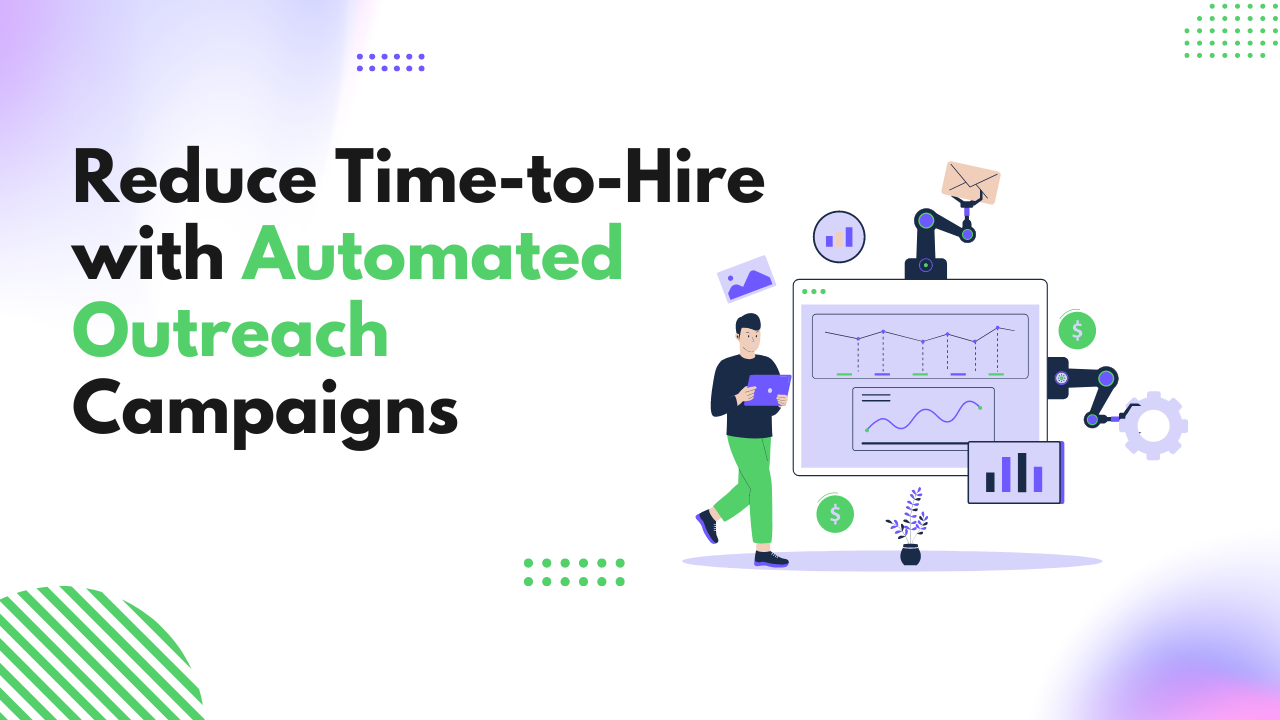In today’s hypercompetitive job market, posting a job description and waiting won’t work. You need a clear strategy. Without one, your recruitment can become disorganised. This often wastes time, resources, and missed opportunities to attract top candidates.
Unplanned hiring brings major consequences. It impacts team productivity, morale, and your bottom line. Thus, having a well-defined strategic hiring plan is crucial.
A hiring plan acts as your roadmap. It helps you navigate the talent landscape. Following this strategy, you can attract top talent and improve your hiring process.
Using a strategic approach enhances hire quality, reduces hiring time, and creates a positive candidate experience. This strengthens your employer brand.
In this guide, we will delve deeper into essential components to a winning hiring strategy. We’ll look at defining your hiring needs, optimising your recruitment workflow, using AI, and measuring your success.
The High Cost of Hiring on Autopilot: Why You Need a Hiring Plan
Imagine your company is growing rapidly, and as a result, you need to fill key positions quickly. Consequently, you scramble to post job ads, go through countless resumes, and conduct rushed interviews. Does this sound familiar? While this reactive approach to hiring might initially seem like a necessary evil, it often, in fact, leads to more harm than good.
Without a strategic hiring plan, businesses are at risk of falling into the trap of merely filling positions, rather than truly finding the right talent. Consequently, this can result in missed growth opportunities. For instance, slow hiring processes prevent you from capitalising on time-sensitive projects or expansions. Furthermore, bad hires can strain your resources by costing time, money, lost productivity, training expenses, and potential severance packages.
Let’s not forget the impact on your existing team – a poor hiring decision can disrupt team dynamics, leading to frustration and decreased productivity amongst your most valuable asset: your people.
The solution? A well-defined, strategic hiring plan.
A strategic hiring plan is like a roadmap for your recruitment process. It helps you move beyond simply filling positions to proactively identifying talent that aligns with your long-term business objectives. This involves:
-
- Anticipating Future Needs: Analysing industry trends and forecasting workforce demands to stay ahead of the curve.
-
- Defining Clear Hiring Criteria: Establishing specific skills, experience, and cultural fit requirements for each role.
- Creating a Streamlined Process: Developing a structured approach to sourcing, screening, interviewing, and onboarding new hires.
This proactive approach yields significant benefits, transforming your hiring process from a reactive scramble into a well-oiled machine that fuels business growth. Let’s explore the key advantages:
Improved Quality of Hires:
A strategic plan enables more targeted recruitment, leading to a higher percentage of candidates who possess the desired skills and experience. This reduces the risk of costly bad hires, which, according to a study by the Society for Human Resource Management (SHRM), can cost up to 300% of the employee’s first year’s salary.
For instance, when a tech company invests in a strategic hiring plan aimed at attracting top engineering talent, it is more likely to develop innovative products and gain a competitive edge. Additionally, by clearly outlining the necessary technical skills, problem-solving abilities, and collaborative mindset required for success, the company can attract and secure individuals who will drive innovation and elevate the entire team.
Reduced Time-to-Hire:
A streamlined process, defined roles, and efficient screening methods minimise wasted time, allowing businesses to secure top talent faster.Research by Glassdoor indicates that the average time-to-hire in the US is 23.8 days. However, a strategic approach can notably reduce this timeframe.
Imagine a retail business with a well-defined hiring plan and a pool of pre-screened candidates. As a result, they can quickly fill seasonal positions. Consequently, this ensures they are adequately staffed during peak seasons. Therefore, this approach not only maximises sales but also maintains a positive customer experience.
Enhanced Candidate Experience:
Clear communication, respectful interactions, and a well-structured process create a positive experience for candidates, even those who are not ultimately hired. This enhances your employer brand, making it easier to attract top talent in the future. In fact, a LinkedIn study revealed that, consequently, 83% of candidates will change their mind about a company after having a positive interview experience.
Alignment with Business Goals:
Strategic hiring ensures every new hire directly contributes to the company’s overall objectives, whether it’s increasing market share, launching new products, or improving customer satisfaction. When hiring decisions are directly tied to your business goals, you can effectively measure the ROI of your recruitment efforts.
Define Your Hiring Needs: Laying the Foundation for Success
The first crucial step in building a strategic hiring plan is, therefore, defining your hiring needs. This, in turn, involves taking a deep dive into your current workforce, forecasting future talent requirements, and subsequently translating those insights into detailed job descriptions. By clearly understanding who you need and why you need them, you set the stage for, consequently, a more focused and successful recruitment process.
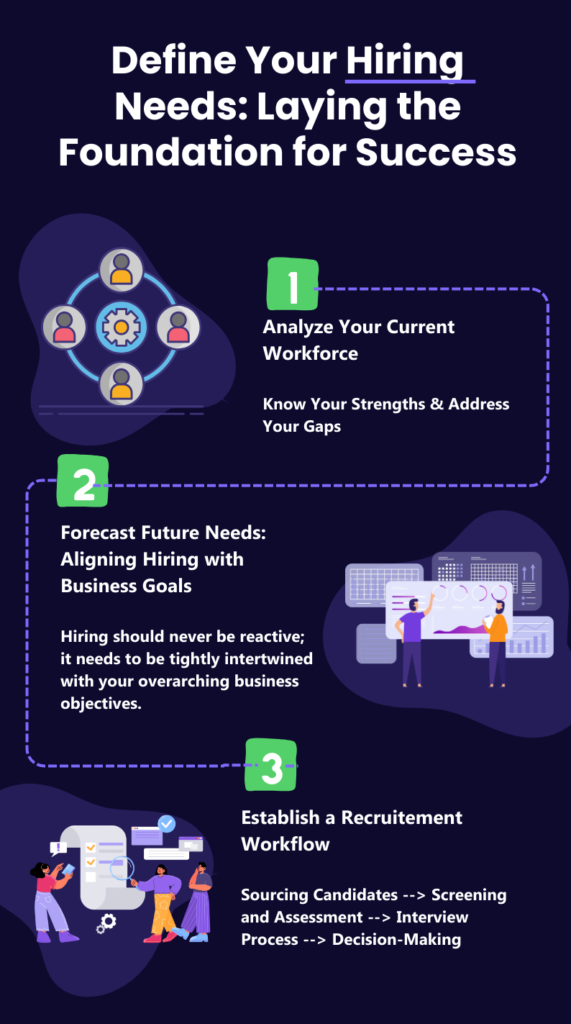
1. Analyze Your Current Workforce: Know Your Strengths & Address Your Gaps
Before you start looking outward for new talent, it’s essential to understand the strengths and weaknesses of your existing team. This involves:
-
- Conducting a Skills Inventory: Create a comprehensive inventory of the skills and experience present within your workforce. This helps identify existing strengths and potential areas where expertise may be lacking.
-
- Leveraging Performance Reviews: Regular performance reviews provide valuable insights into employee skills, areas for improvement, and potential skill gaps that need to be addressed.
-
- Gathering 360-Degree Feedback: Implementing 360-degree feedback provides a well-rounded perspective on employee strengths and weaknesses, gathered from peers, managers, and even clients.
For example, imagine a rapidly growing tech startup with a stellar development team. While their technical skills are top-notch, they may lack the marketing expertise needed to reach a wider audience. Identifying this gap early on allows them to prioritize hiring for a marketing role.
Failing to address skill gaps can, therefore, hinder growth and subsequently limit your company’s potential. However, by proactively analyzing your current workforce, you will be able to make informed decisions about training, development, and future hiring needs.
2. Forecast Future Needs: Aligning Hiring with Business Goals
Hiring should never be reactive; it needs to be tightly intertwined with your overarching business objectives.
-
- Strategic Planning Alignment: Your hiring plan should be a direct reflection of your company’s strategic plan. What new roles will you need to achieve your goals? What skills will be in high demand as your company evolves?
-
- Market Analysis: Staying ahead of the curve means understanding industry trends. Analyze market trends and competitor activities to anticipate future skill demands and proactively adjust your hiring strategy.
-
- Scenario Planning: Prepare for various potential futures through scenario planning. This process involves, firstly, considering different possibilities for your business and, subsequently, outlining the talent implications for each scenario.
For instance, analyzing sales data can help project future hiring needs for sales representatives. Similarly, anticipating industry shifts towards new technologies allows you to start building a talent pipeline with the necessary skills. Consequently, once you’ve identified future skill requirements, you should develop a proactive training or recruitment plan. This way, you ensure you’re prepared to meet the talent demands of tomorrow, today.
3. Craft Detailed Job Descriptions: Attracting the Right Talent
A well-crafted job description is more than just a list of responsibilities; it’s a powerful tool for attracting the right talent.
A strong job description should include:
-
- Job Title: A clear and concise job title that accurately reflects the role.
-
- Company Overview: A brief introduction to your company, highlighting your culture and values.
-
- Job Summary: A concise overview of the role’s purpose and main responsibilities.
-
- Responsibilities: A detailed breakdown of the key tasks and duties associated with the role.
-
- Qualifications: Clearly state the required education, experience, and certifications.
-
- Preferred Skills: Highlight any desired skills that would enhance a candidate’s suitability.
-
- Benefits: Outline the benefits package and perks you offer to employees.
-
- Company Culture Highlights: Showcase what it’s like to work at your company.
Writing Tips for Effective Job Descriptions:
-
- Use clear and concise language, avoiding jargon.
-
- Highlight your company culture and values.
-
- Use relevant keywords to optimise for search engines.
-
- Showcase a “Do and Don’t” Example to illustrate best practices.
By investing time in crafting compelling and informative job descriptions, you set clear expectations and increase your chances of attracting top talent who are the right fit for your company. To learn more about how to post a job description and check out some effective job posting templates, you read our blog Job Posting Templates that Work.
Establish a Recruitment Workflow
A well-defined recruitment workflow not only ensures consistency and efficiency but also fosters a positive experience for both your team and potential candidates. Here’s a step-by-step breakdown:
1. Sourcing Candidates
Attract a diverse pool of qualified candidates.
Implementation:
-
- Identify Your Ideal Candidate: Before starting your search, clearly define the skills, experience, and cultural fit of your ideal candidate.
-
- Choose the Right Channels: Avoid spreading yourself too thin. Based on your ideal candidate profile, select the most effective recruitment channels:
-
- Job Boards: Use general job boards (Indeed, LinkedIn) or niche platforms relevant to the specific role.
-
- Social Media: Engage on LinkedIn, Twitter, and industry-specific platforms to reach a broader audience.
-
- Employee Referrals: Encourage your team to refer qualified candidates.
-
- AI-Powered Talent Pools: Leverage platforms like TapTalent to access a global talent pool of 800 million+ professionals, pre-screened by AI.
-
- Choose the Right Channels: Avoid spreading yourself too thin. Based on your ideal candidate profile, select the most effective recruitment channels:
-
- Craft Compelling Job Descriptions: Write clear, concise, and engaging job descriptions that highlight the role’s impact as well as your company culture.
Expected Impact:
-
- Increased reach to qualified candidates.
-
- Reduced time spent on manual sourcing.
-
- A more diverse talent pool.
-
- 2. Screening and Assessment
Efficiently narrow down the applicant pool to the most promising candidates.
Implementation:
-
- Automated Screening: Use your ATS or platforms like TapTalent to automatically filter applications based on pre-defined criteria (skills, experience, location).
-
- Resume Review: Develop a structured approach to resume review, focusing on skills and experience relevant to the role.
-
- AI-Powered Assessments: Utilize AI-driven assessment tools (like those offered by TapTalent) to evaluate candidates’ cognitive abilities, technical skills, and personality traits.
-
- Initial Screening Calls: Conduct brief phone or video calls to assess candidates’ communication skills, interest in the role, and cultural fit.
Expected Impact:
-
- Significant reduction in time spent on manual screening.
-
- More objective and data-driven candidate evaluation.
-
- Improved quality of candidates moving to the interview stage.
-
- 3. Interview Process
Gather in-depth insights into candidates’ qualifications and assess their fit for the role and company culture.
Implementation:
-
- Structured Interviews: Design standardized interview questions that assess key competencies for the role.
-
- Behavioral Interviewing: Ask candidates to provide specific examples of past experiences to demonstrate their skills and problem-solving abilities.
-
- Panel Interviews: Involve multiple interviewers from different teams to gain diverse perspectives.
-
- Technical Assessments: Use coding challenges, case studies, or simulations to evaluate candidates’ technical skills for specific roles.
-
- Culture Fit Assessment: Include questions or activities to gauge how well candidates align with your company values and work environment.
-
- Video Interviewing: Use video conferencing tools for remote interviews, offering flexibility and convenience for both parties.
Expected Impact:
-
- More consistent and objective candidate evaluations.
-
- Deeper understanding of candidates’ skills and experience.
-
- Improved candidate experience through a structured and well-organized process.
- Improved candidate experience through a structured and well-organized process.
-
- 4. Decision-Making
Make informed and objective hiring decisions based on a comprehensive evaluation of each candidate.
Implementation:
-
- Establish Clear Criteria: Before conducting interviews, define the essential and desirable criteria for the role, and weight them based on importance.
-
- Scorecards and Rubrics: Utilize scorecards or rubrics to rate candidates on pre-defined criteria, thereby ensuring consistency and objectivity in the evaluation process.
-
- Gather Feedback: Collect feedback from all interviewers involved in the process to gain a holistic view of each candidate.
-
- Reference Checks: Conduct thorough reference checks to verify past performance and gather additional insights.
-
- Decision Meetings: Hold decision meetings with key stakeholders to discuss top candidates, compare evaluations, and make a final decision.
-
- Offer Stage: Extend a competitive offer to the chosen candidate, clearly outlining compensation, benefits, and other relevant terms.
Expected Impact:
-
- More confident hiring decisions based on data and feedback.
-
- Reduced bias and subjectivity in the selection process.
-
- Improved quality of hires and reduced turnover.
By implementing these steps and utilizing AI-powered tools like TapTalent, you can establish a highly effective recruitment workflow that not only helps you find and hire top talent but also streamlines your hiring process and reduces time-to-hire.
Optimize Your Employer Brand
In today’s competitive job market, building a strong employer brand is no longer optional—it’s essential. A compelling employer brand allows you to stand out, attract top-tier talent, and differentiate yourself from the competition. Think of your employer brand as your company’s reputation as an employer. It’s what potential candidates see, hear, and feel when they interact with your organization.
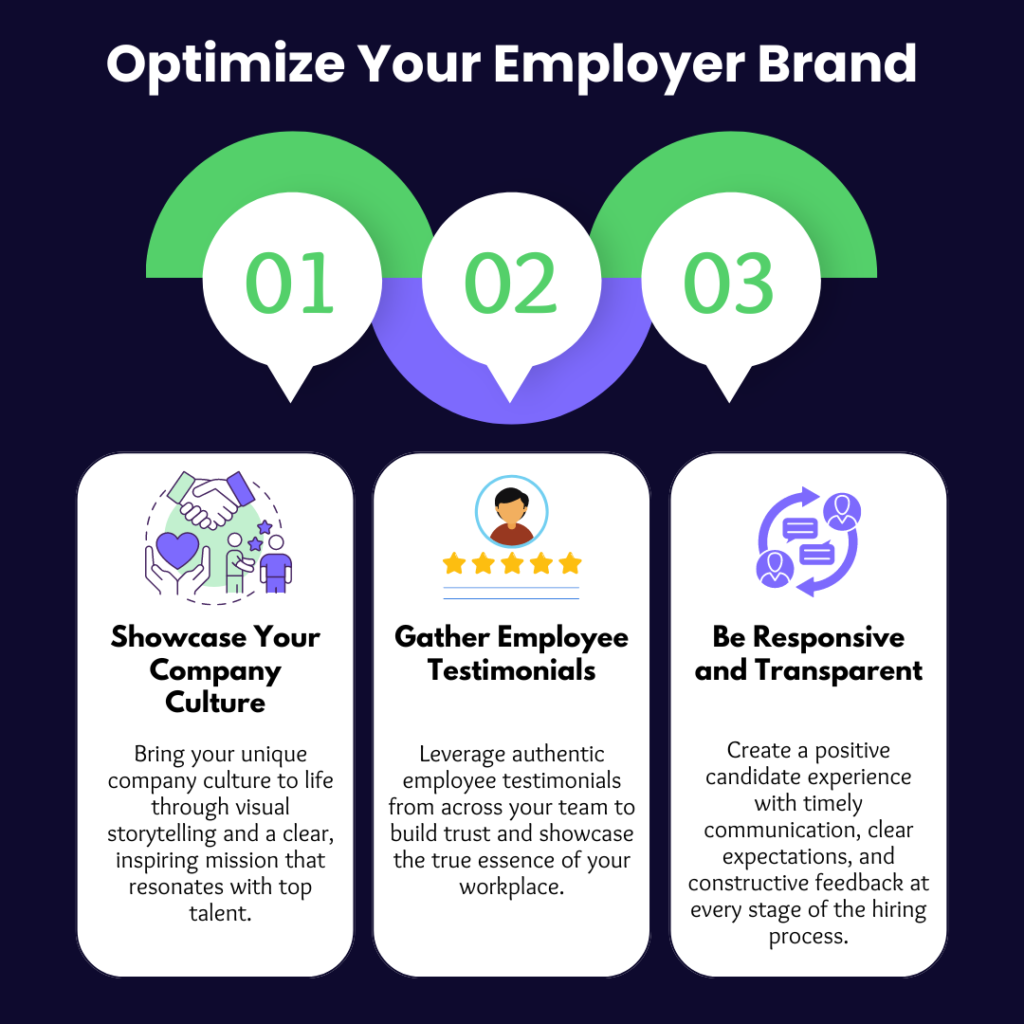
Here’s how you can elevate your employer brand to attract the best and brightest:
1. Showcase Your Company Culture
What makes your company a unique and rewarding place to work? Don’t just tell potential candidates—show them!
-
- Define and Communicate Your Values: Clearly articulate your company’s core values. What principles drive your decisions and shape your work environment? For example, at TapTalent, innovation, collaboration, and customer-centricity are at the heart of everything we do.
-
- Highlight Your Mission: Explain your company’s purpose and how it contributes to a larger goal. A strong mission statement can be a powerful motivator for potential employees.
-
- Showcase Your Work Environment: Describe the atmosphere at your company. Is it fast-paced and dynamic? Collaborative and supportive? Use descriptive language to paint a picture of what it’s like to be part of your team.
-
- Visual Storytelling: Use high-quality images and videos on your website and social media to bring your company culture to life. Share photos of team events, employee spotlights, or even virtual office tours.
2. Gather Employee Testimonials
Employee testimonials are powerful forms of social proof that build trust and credibility.
-
- Identify Brand Ambassadors: Encourage enthusiastic employees who embody your company culture to share their experiences.
-
- Diverse Perspectives: Gather testimonials from employees across different departments and levels of seniority to provide a well-rounded view of your organization.
-
- Authenticity is Key: Encourage employees to share genuine stories and perspectives, even if they highlight areas for improvement. Authentic voices resonate more strongly with candidates.
-
- Content Formats: Experiment with different formats, such as written testimonials, video interviews, or even employee-generated content on social media.
-
- Strategic Placement: Feature testimonials prominently on your website’s careers page, job postings, and social media platforms.
3. Be Responsive and Transparent
Candidates today expect a positive and respectful experience throughout the hiring process.
-
- Timely Communication: Respond to candidate inquiries promptly and keep them informed throughout the hiring process, even if it’s just a brief update.
-
- Application Status Updates: Provide regular updates on application statuses, even if it’s just to acknowledge receipt of their application.
-
- Clear Expectations: Outline the hiring process and timelines upfront so candidates know what to expect at each stage.
-
- Constructive Feedback: Offer feedback after interviews, even if a candidate is not selected. This shows respect for their time and effort.
-
- Open to Questions: Encourage candidates to ask questions and address any concerns they may have about the role or your company.
By focusing on these strategies, you can optimize your employer brand to attract, engage, and convert top talent in today’s competitive landscape.
Measure and Improve: The Cornerstone of a Successful Hiring Plan
You’ve meticulously crafted your strategic hiring plan, outlining your goals, ideal candidate profiles, and recruitment channels. But the work doesn’t stop there. A truly effective plan is a living document, constantly evolving based on data and insights. This is where the “Measure and Improve” phase takes center stage.
Track Key Metrics: Let Data Guide Your Decisions
In the world of talent acquisition, intuition alone isn’t enough. Data-driven decisions are the cornerstone of a successful hiring strategy. By tracking key metrics, you gain valuable insights into the effectiveness of your plan and can identify areas for improvement.
Essential Metrics to Monitor:
-
- Time-to-Hire: A high time-to-hire might indicate bottlenecks in your interview process, prompting a streamlined approach.
-
- Cost-per-Hire: This metric helps you analyze your budget allocation across various recruiting channels, ensuring optimal ROI.
-
- Candidate Satisfaction: Regular surveys offer a glimpse into the candidate experience, revealing areas for improvement.
-
- Quality of Hire: Assessing long-term performance and attrition rates helps you understand the true success of your hiring decisions.
-
- Source of Hire: By identifying where your top performers originate, you can focus efforts on the most effective sourcing channels.
Gather Feedback: Listen, Learn, and Adapt
Building a feedback loop is crucial for continuous improvement. Both hiring managers and new hires offer valuable perspectives on different aspects of the hiring journey.
-
- Hiring Manager Feedback: Understand their experience with candidates, assessing role suitability and team dynamics.
-
- New Hire Feedback: Gather insights into the onboarding experience and the accuracy of job descriptions from a fresh perspective.
Effective Feedback Collection Methods:
-
- Surveys: Anonymous and easy to analyze, surveys are excellent for gathering initial impressions.
-
- Interviews: Structured or informal interviews allow for deeper insights and follow-up questions.
-
- Regular Check-ins: Especially valuable during onboarding, check-ins foster open communication and address concerns promptly.
Remember, feedback is most valuable when it leads to actionable change. Analyze the insights gathered and adjust your processes accordingly.
Stay Agile: Adapt and Thrive in a Changing Landscape
The job market is a dynamic environment influenced by technological advancements, evolving candidate expectations, and economic shifts. A successful hiring plan remains adaptable to navigate these changes effectively.
Tips for Maintaining Agility:
-
- Regularly Review Your Hiring Plan: Conduct quarterly or annual reviews to ensure alignment with current business goals and market trends.
-
- Stay Informed About Industry Trends: Keep your finger on the pulse by reading industry publications and attending relevant conferences.
-
- Be Open to Experimentation: Don’t shy away from testing new sourcing channels, AI-powered tools, or innovative assessment methods.
By embracing a data-driven, feedback-oriented, and adaptable approach, you transform your strategic hiring plan into a dynamic tool for attracting and securing top talent in today’s competitive job market.
Conclusion
In conclusion, building a strategic hiring plan is no longer a luxury but a necessity for organizations aiming to thrive in today’s competitive market. By aligning your hiring process with your overall business objectives, you can ensure that you attract, engage, and secure the best talent.
Remember to define your hiring needs clearly, streamline your recruitment workflow for efficiency, and leverage the power of technology like TapTalent to optimize your search and selection process.
Don’t delay – start crafting your strategic hiring plan today and position your organization for success in the ever-evolving war for talent.
- Hiring
- hiring process
- Recruitment
- Talent Acquisition
